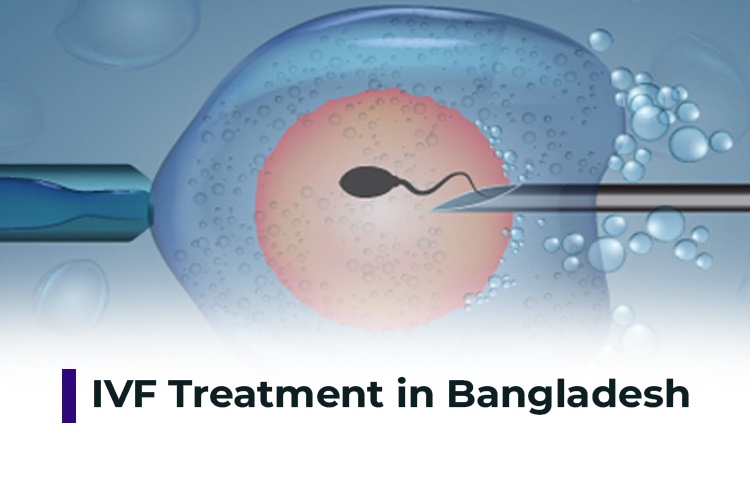
In recent years, infertility has become a significant concern for many couples in Bangladesh. With changing lifestyles, environmental factors, and delayed marriages, the incidence of infertility is on the rise. In response to this growing need, In Vitro Fertilization (IVF) treatment has gained popularity as a viable solution for couples struggling to conceive. However, the IVF system in Bangladesh presents both challenges and opportunities.
Access to IVF treatment in Bangladesh is primarily concentrated in urban areas, particularly in the capital city of Dhaka. Leading hospitals and specialized fertility clinics offer IVF services, but the high cost remains a significant barrier for many couples. The expenses associated with IVF procedures, including medications, consultations, and laboratory tests, often exceed the affordability of the average Bangladeshi family.
Furthermore, there is a lack of comprehensive insurance coverage for infertility treatments, including IVF, leaving couples to bear the financial burden themselves. This disparity in access to fertility services perpetuates inequalities, as only affluent individuals or those willing to incur substantial debt can avail themselves of IVF treatment.
Moreover, societal stigmas surrounding infertility add another layer of complexity to the IVF landscape in Bangladesh. Infertility is often viewed as a taboo subject, leading to social ostracization and psychological distress for affected couples. Many individuals hesitate to seek medical help due to fear of judgment or societal pressure, further exacerbating their plight.
Despite these challenges, the IVF system in Bangladesh also offers hope and opportunities for couples yearning to start a family. Advances in medical technology and increasing awareness about infertility have prompted more individuals to seek treatment. Fertility clinics are investing in state-of-the-art equipment and employing skilled professionals to enhance the success rates of IVF procedures.
Additionally, initiatives aimed at destigmatizing infertility and raising awareness about available treatments are gaining momentum. Non-governmental organizations (NGOs) and advocacy groups are working tirelessly to educate the public and provide support to individuals navigating the complexities of infertility.
Government intervention is crucial in addressing the challenges plaguing the IVF system in Bangladesh. Policies promoting equitable access to fertility services, subsidizing treatment costs for economically disadvantaged couples, and integrating infertility care into existing healthcare frameworks are needed to ensure that all individuals have the opportunity to build their families.
In conclusion, the IVF system in Bangladesh is a double-edged sword, presenting both challenges and opportunities. While access barriers and societal stigmas persist, advancements in medical technology and increasing awareness offer hope for couples struggling with infertility. By addressing these challenges through concerted efforts from healthcare providers, policymakers, and civil society, Bangladesh can pave the way for a more inclusive and supportive environment for individuals seeking IVF treatment.
FAQs
1. What is IVF treatment, and how does it work? In Vitro Fertilization (IVF) is a fertility treatment where eggs are retrieved from a woman’s ovaries and fertilized with sperm in a laboratory. The resulting embryos are then transferred to the woman’s uterus, with the goal of achieving a successful pregnancy.
2. How common is infertility in Bangladesh? Infertility affects a significant portion of couples in Bangladesh, with estimates suggesting that around 15-20% of couples face difficulties conceiving.
3. Where can I find IVF treatment centers in Bangladesh? IVF treatment centers are primarily located in urban areas, particularly in Dhaka, the capital city. Leading hospitals and specialized fertility clinics offer IVF services.
4. What are the costs associated with IVF treatment in Bangladesh? IVF treatment in Bangladesh can be expensive, with costs varying depending on the clinic and specific procedures required. Expenses typically include consultation fees, medications, laboratory tests, and the IVF procedure itself. On average, couples may expect to spend several lakh taka for a full IVF cycle.
5. Is IVF covered by health insurance in Bangladesh? Comprehensive insurance coverage for infertility treatments, including IVF, is limited in Bangladesh. Most insurance plans do not cover the costs associated with IVF procedures, leaving couples to bear the financial burden themselves.
6. Are there any support services available for couples undergoing IVF treatment? Yes, several non-governmental organizations (NGOs) and support groups in Bangladesh offer assistance and counseling for couples dealing with infertility. These organizations provide emotional support, educational resources, and guidance throughout the IVF process.
7. What are some of the challenges faced by couples undergoing IVF treatment in Bangladesh? Challenges include the high cost of treatment, limited access to fertility services outside of urban areas, societal stigmas surrounding infertility, and the lack of comprehensive insurance coverage for IVF procedures.
8. What steps can the government take to improve the IVF system in Bangladesh? Government intervention is crucial in addressing the challenges faced by couples seeking IVF treatment. Policies aimed at promoting equitable access to fertility services, subsidizing treatment costs for economically disadvantaged couples, and raising awareness about infertility are essential steps toward improving the IVF system in Bangladesh.
Hi, this is a comment.
To get started with moderating, editing, and deleting comments, please visit the Comments screen in the dashboard.
Commenter avatars come from Gravatar.